Ganymede and Callisto: Could There Be Life On These Moons of Jupiter?
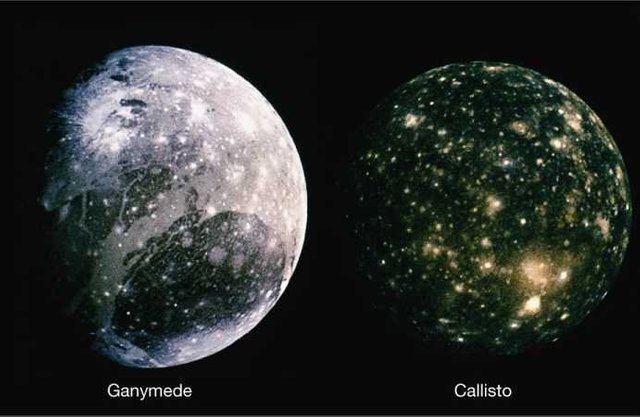
I recently covered the possibilities of life on two of Jupiter's Galilean moons, Europa and Enceladus. The last two, Ganymede and Callisto, have some interesting things happening on them that I would like to talk about.
GANYMEDE
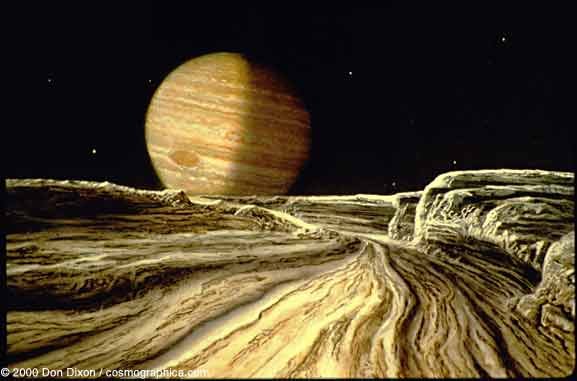
Ganymede is large enough to be called a planet if it orbited the Sun instead of Jupiter. It is larger than Mercury and just a bit smaller than Mars, making it the 9th largest body in our Solar System. It is also the only moon with a significant magnetic field, indicating that it has a liquid iron core.
It is also covered in ice and has a liquid ocean beneath. Under a 95 mile (150km) shell of ice there could be a liquid ocean that is 60 miles (100km) deep. If that is true, then it would contain more water than Earth. Scientists using the Hubble Telescope viewed the aurorae caused by its interaction with the much stronger one generated by Jupiter and noticed it didn’t rock back and forth as much as models suggested, but when they added salt to the liquid ocean the models aligned.
This new evidence changed the whole way scientists had thought the layers of Ganymede were built. Before they thought, icy shell – ocean – ice mantle – rocky mantle. The pressures from such a deep ocean forced ice to create below it, prohibiting interaction with the rocky core and any energy and minerals there (life possibilities). Now they think there are multiple layers of ice, then ocean (up to three layers is possible) – with each layer of liquid ocean getting saltier the deeper it is.
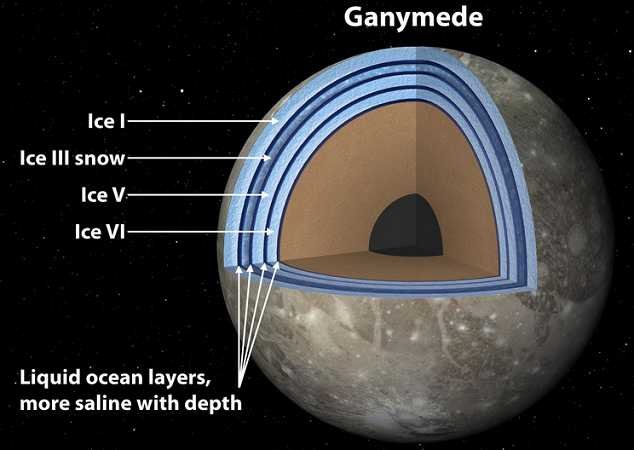
Since the magnetic field points to Ganymede having a liquid iron core and saltwater ocean that might be riding on the rocky mantle we now have a chance for geothermally heated hydrothermal vents, a leading contender for the creation of life. In addition there are tidal forces that act upon it from Jupiter and the other moons, stretching and contracting as it passes closer and further away from that large planet. These forces will create heat by friction.
Researchers can’t know for sure which model is correct, or if the liquid ocean is in fact touching the rocky bottom. But there is a space probe mission slated to help find out some answers.The European Space Agency is working on launching its JUICE mission to Ganymede, but it will also make multiple passes over Callisto as well as two passes over Europa. This mission is expected to launch in 2022, take 7.6 years to travel there, and spend 3.5 years surveying.
CALLISTO
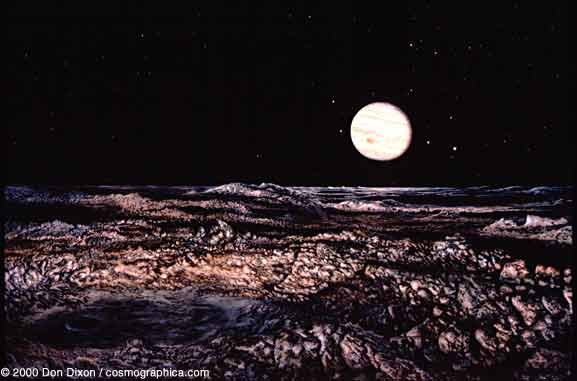
Up until the Galileo probe explored it in the late 90’s, many people had dismissed Callisto as a dead and uninteresting world. It is 99% the size of Mercury , but with only 1/3rd the mass. Made up of compacted ice and rock with a small silicate core and a 100km thick icy shell, an accumulation of the leftovers that were in Jupiter’s ring during its early formation.
It’s estimated to have taken 100,000 years for Callisto to form, compared to just 10,000 years for Ganymede. That slow forming is why scientists believe the inside of this moon is just a bunch of rock and ice that eventually came together, so it lacks an iron core.
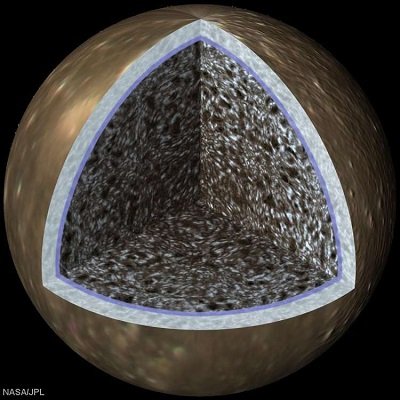
It orbits Jupiter at a distance of 1,880,000km, which is much further than the next closest satellite of Ganymede at an orbit of 1,070,400km. This means that Callisto doesn’t have any noticeable tidal heat forces that the other main moons of Jupiter do. The tidal heat being caused by the frictional push and pull of being near to Jupiter and the nearby moons of Io, Europa, or Ganymede. It also doesn’t have any volcanic forces like Io does. In fact, no sign of geologic activity at all, and the only reason it isn’t perfectly flat is because of impacts to the surface over its 4 billion year existence.
So people thought it was just another boring moon. But then the Galileo probe comes along and takes some strange readings. Callisto’s magnetic field was fluctuating as it orbited Jupiter. The electrical currents of the magnetic field were also flowing in opposite directions at different measurement times. The most likely cause was a subsurface liquid salty ocean!
But it doesn’t have any heat, not from the tidal forces nor from a hot core – so how could there be liquid water? Well, it appears that it is being slightly heated from radioactive elements, and the icy shell is insulating it. Is that enough energy for life? Maybe not enough to create life, but maybe enough for some simple organisms to survive.
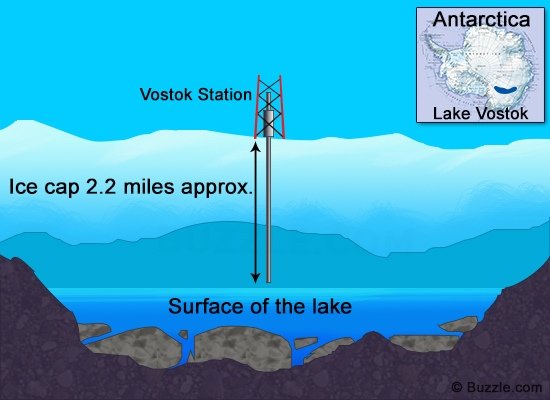
It could be like Lake Vostok in Antarctica, one of around 400 subglacial lakes. That body of liquid water lays 2 miles beneath the ice sheet there and has been locked away for 15-25 million years. Now the researchers who first drilled into it to check for life made a big mess of it, and questions arise about contamination of both outside organisms and the kerosene used to keep everything from freezing up. But it is possible that they found one unknown organism that could have been living in the lake all this time.
So while Callisto seems like a long shot for the creation of life, it may be keeping some small bit of it alive.
What is more interesting is the possibility of placing human life there. Scientists using the Hubble Space Telescope have taken readings and released their findings.
It has the second densest oxygen atmosphere after Earth, created by the radiation off of Jupiter splitting the atoms of the surface ice. The radiation levels are low enough as to be not so much of a worry to human colonists. It has a dead and inactive surface, so it is safe from volcanoes or tectonics. The ice can be made into fuel for exploration of our outer solar system. This is why NASA has Callisto at the top of its list for the future outer solar system colonization efforts. It could be a refueling stop to fill spaceships up with rocket fuel and water, and then use the power of Jupiter’s gravity to sling those vessels onward.
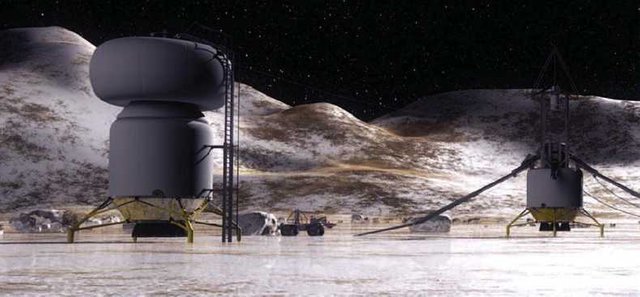
This was all considered in NASA’s 2003 Human Outer Planets Exploration (HOPE) study, and in that same year NASA expressed belief that a manned mission would be possible as early as the 2040’s.
So one way or another, this supposedly dead and uninteresting world looks to be a key stepping stone for the future of humanity’s exploration of space.
My other articles on possible life within our own Solar System
Venus: Possibilities of Life, Colonization, and Terraforming
Enceladus: The Best Chance For Extraterrestrial Life in Our Solar System
Europa: The Moon That Could Contain Life
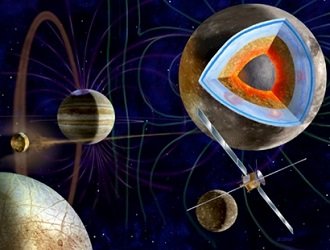
I enjoyed reading this article, I think that life could be formed in any planet or moon in space, and also I guess there could be sentient life forms out there. Perhaps there is something on these two moons, but I guess we won't really know until we get there, I mean humans get there, if this ever happens.
That's why space exploration must be a top priority.
upvoted and resteemd!
Awesome!
Your articles about space are definitely those I prefer from you ^^
Thank you so much! I do enjoy mixing it up myself though :D
Wow - I enjoyed your article - it's fun just considering the possibilities. I didn't know much about the moons of Jupiter - so thanks immensely.
I see that Callisto is the granddaddy, being 10 Times as old as GANYMEDE.
It's interesting that GANYMEDE is the 9th biggest body in our Solar system.
And the fact of it having a Liquid ocean under a sheet of ice - well, it puts me in mind of No. Dakota (US) - many of the lakes get like that come wintertime.
Anyway, keep these astonishing (and enlightening) posts coming !
Well, the evidence says that Callisto and Ganymede formed around the same time but that Callisto took 10 times longer to form. Thanks for reading!
Everyone talking about extraterrestrial life, is there anywhere I can bet they don't find anything they didn't bring with them?
I know they're looking at Mars' methane, and I'd like to cash out when they come out empty handed.
Since they have seen hitchhiking bacteria survive a space journey they must be cautious of that when the search for other life is the mission. But that search is a very important one, as it can shed light on how rare life is - if was found to have started independently twice in the same solar system, then that points to it being more common than we think.
Until the future comes when we can get down to the bottom of a good candidate like Enceladus all we have is speculation. :D
Fantastic article, @getonthetrain!
Its good to know we have some distant future prospects for the continuation of mankind, should we not wipe ourselves out first.
Keep up the great work, bro!
Thanks @ezzy! I had some major internet issues that nearly kept this article from appearing last night - what should have took 30 minutes tops actually took over 4 hours!
Ganymede will be a great place to have a baby for the outer planet citizens.
Callisto is the moon they are looking at currently as the top option. When the JUICE mission gets to Ganymede they can run more tests to see how protective the magnetic field is to the high radiation levels that Jupiter throws out.
Resteemed!
The claim which you read is that Ganymede has a 600 km deep outer mantel of salt water with a layer of ice over top of it. There are two reasons why they tell people that, i.e. they are trying to explain:
Problems with this line of thinking include (minimally):
The fact that such a Dynamo effect would be ongoing and such an intrinsic magnetosphere created by a Dynamo effect (both on earth and on Ganymede) would be continuously topped off and would not diminish; nonetheless we know that our own magnetosphere is diminishing.
There are dark areas on the surface which you should assume to be solid land, and you cannot have solid land sitting on top of an ice sheet on top of a 600 km deep outer mantel of water, with or without salt.
A much more reasonable assumption is that the intrinsic magnetospheres both on earth and on Ganymede were fused in very early on by intense Birkeland currents and are basically remnants, having nothing to do with any sort of Dynamo effect.
The outer mantel of Ganymede is basically pumice and not water. Pumice is lighter than water and floats and would more readily explain the ultralow moment of inertia. Conductivity within such an outer mantel of pumice would be explained by the kinds of P-holes which creates surface conductivity on rocks. Pumice, of course, is by volume mostly surface, like the radiator in a car.
Putting Jupiter inside one AU of our sun (where you find most gas Giants and dwarf stars orbiting primaries within our galaxy) and Ganymede becomes a freshwater ocean world with light both from the dwarf star and the sun, and both bergs and anchored islands of pumice.